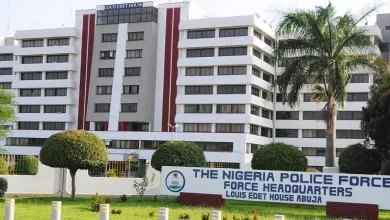
Senator Rocha’s Okorocha might land into more trouble if recent decisions taken by his kinsmen see the light of day. Orlu zone traditional rulers and Orlu zone political consultative Assembly, OPOCA, on Monday, agreed to activate the recall process of Senator Rochas Okorocha, representing Imo West Senatorial district. This decision was taken at the palace of the traditional ruler of Amaifeke in the Orlu local government area of Imo state, Eze Emmanuel Okeke.
This is coming after the 48 hours given to Okorocha to apologize to Imo people had expired. In their communique the leaders wrote: “The leadership of Orlu Political Consultative Assembly (OPOCA) ably led by its National President, Chief Barr. Rex Anunobi, after briefing the leadership of Orlu Zone Traditional Rulers, Chairmen of Local Government Councils in Imo West Senatorial Zone (Orlu Zone) and Orlu Zone Council of Elders on recent political developments vis-a-vis the recent invasion of property, Royal Spring Palm Estate & Hotel, located along Akachi Road, Owerri, sealed by the State Government following a gazetted White Paper, by a former governor and senator representing Orlu Senatorial District in the National Assembly, Senator Rochas Okorocha, and after much deliberations unanimously resolved and adopted the followings:
“That we have monitored and reviewed series of unprovoked utterances and activities of Senator Rochas Okorocha which no doubt are meant to distract our dear Governor, Senator Hope Uzodinma from cleaning up Imo from the mess his administration plunged the State. “That the ultimatum issued to Rochas Okorocha by OPOCA which is the apex political body in Orlu Zone, demanding that the former governor tenders an unreserved apology to Governor Hope Uzodimma and Ndi Imo over his recent embarrassing and lawless invasion of a properly sealed by the State Government purportedly owned by his wife, is a right step in the right direction. The Orlu Zone Council of Traditional Rulers, Chairmen of the 12 Local Government Council Areas in Orlu Zone and Orlu Zone Elders Council hereby adopt the position of OPOCA to commence without delay the recall of Senator Rochas Ethelbert Anayo Okorocha from the Senate of the Federal Republic of Nigeria.
“That we commend and endorse every action taken by our dear Governor, Senator Hope Uzodimma, to recover for Ndi Imo all property and funds that were looted and diverted by Okorocha, his family members and cronies. And that we shall at no time condone or tolerate any ploy aimed at frustrating the “Recovery” drive of the Shared Prosperity Government of Senator Hope Uzodimma. “That we decry the failure of Senator Rochas Okorocha to effectively represent the people of Orlu Senatorial District. It is shameful and regrettable that Okorocha who is yet to brief his constituents including traditional rulers for over 19 months he has been in the Senate, is rather busy fighting.” “This unfortunate situation is a departure from the quality representation we witnessed during the 8 years (2011-2019) our present Governor, Senator Hope Uzodinma, represented Orlu Senatorial District before his election as Governor of Imo State.
“That we hereby renew our earlier call to all sons and daughters of Orlu Zone both at home and in the diaspora to support the Shared Prosperity Government of Senator Hope Uzodimma anchored on Reconstruction, Rehabilitation and Recovery (3-R) which has within a short period returned Imo State to the glorious path of development and good governance. “That we unequivocally pass an implicit Vote of Confidence on our dear Governor, His Excellency, Senator Hope Uzodimma and his team for visionarily displaying competence in governance and selflessly embarking on peoples oriented projects and programmes such as massive construction of quality roads across the three (3) Senatorial Zones, skill acquisition and empowerment for the youths and women, health care delivery services, repositioning the civil and public service sectors of the State for improved productivity among others,” The orlu zone leaders said.






